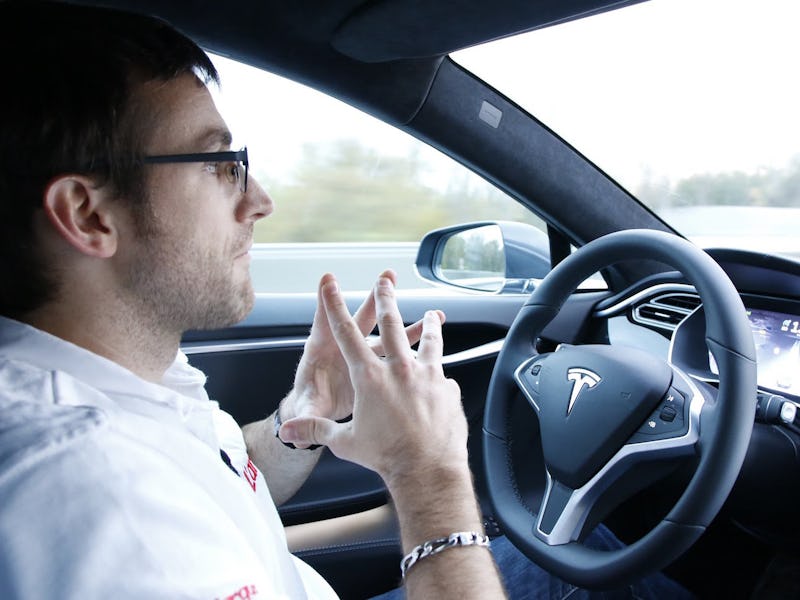France's Driver's Ed Failure Rate Proves Need for Self-Driving Car Adoption
Self-driving cars don't need theory. They need adoption.

Stateside, permit tests are laughable. Students are given tomes to study for preparation, but the written test itself takes about four neurons to complete. But in France, faced with worrisome driver fatalities, the test just got a lot harder. The only problem? No one — almost literally no one — can pass it.
It’s typically been in a country or state’s interest to get drivers out of driver’s ed and onto the road. There needs to be training, and there needs to be a test — you can’t just throw greenhorn drivers into Tesla Model 3s willy-nilly and expect everything to be peachy — but the written, quote-unquote theoretical exam has long been farcical. Are roads more slippery 15 minutes before or after a rainstorm begins?
On average, 70 percent of student drivers in France would pass the old test. When this new theory test rolled in on Monday, that figure dropped down to 16 percent. In one department, The Local reports, only one of 60 applicants passed. Reportedly, test-takers were subject to a larger field of potential questions — 1,000 — and these questions included topics like “‘eco-driving’ and first aid.” Also, students would previously take the test in the same room, answering questions from the same screen; in this version, students were isolated and given individual tests.
France is now reviewing the test and will presumably dumb it down once more.
There’s an easier solution, though. Self-driving cars don’t need theory. Self-driving cars learn not just from their own experiences but from the entire fleet’s experiences. If a Tesla in Oklahoma nicks a guardrail because a sleepy-eyed trucker drifts out of her lane, the artificial intelligence will learn and teach it across the board. The next time that situation arises – in Oregon, this time, let’s imagine – there will be no guardrails nicked.
Not to mention these self-driving cars are already very good at what they do. They’ve avoided hazards that’d bring even the most goody-two-shoes driver to palpitate. Here’s one example: A Tesla Model S on autopilot avoided a highway collision in Cleveland earlier this month. Here’s another: A different Tesla on autopilot avoided a head-on collision near Seattle last October. (The driver of that car explained: “I wasn’t even able to honk the horn before the car came to a stop. The autopilot saved my butt!”)
France, take a cue. Forget these sham tests and get with the future. Fatalities occur at highway speeds, and self-driving cars have just about mastered highway driving. These artificially intelligent cars don’t need theory — they need massive adoption. The more you get on the road, the more the fleet can communicate. The more communicative the roads are, the safer those roads are.
And I’m pretty sure I’ve got at least 59 French student drivers who may be ready to sign the petition.